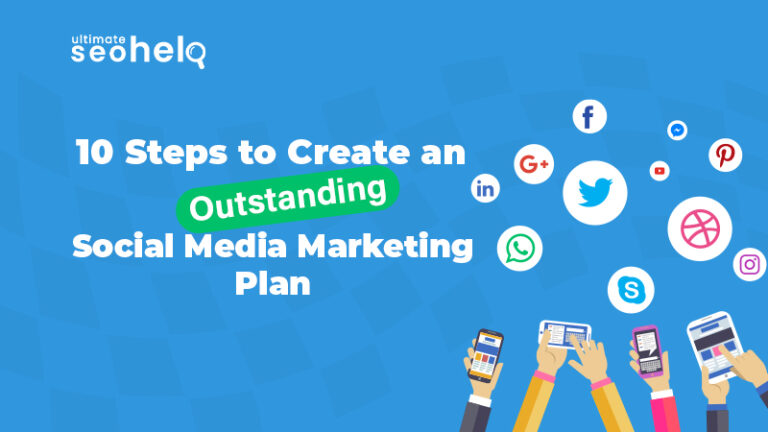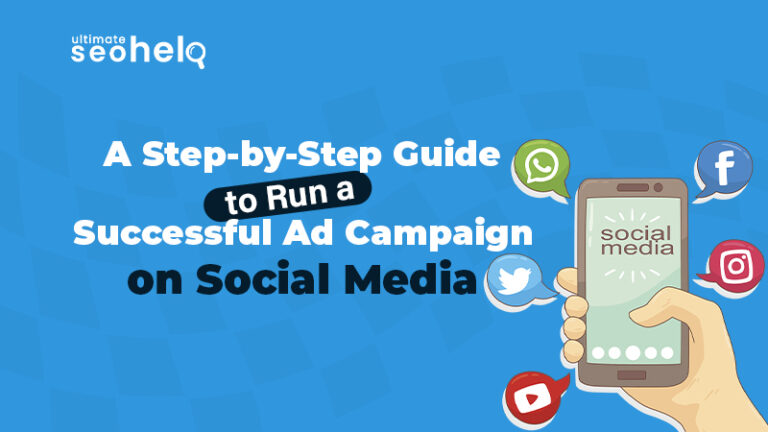Since its introduction, social media has grown to play a significant role in marketing plans for various industries. There are nearly 3.8 billion people worldwide who use social media, so a comprehensive social media marketing plan is necessary to expand your brand.
Over the past decade, marketing experts have elevated their use of social media marketing strategy due to the large number of people—from every nation, every age group, and every profession. Undoubtedly, a successful social media strategy outlines how your brand may succeed and hold its own against fierce competition.
However, creating a successful social media strategy requires more than simply being inspired by original ideas on the internet and following the crowd. It necessitates careful consideration and the right actions. So, are you curious enough to know how to create an effective social media strategy? In this blog, we aim to create an outstanding social media marketing plan. So, without any further ado, let’s dive into the discussion.
What Is SMM and Why Is It Important?
Social Media Marketing (SMM) refers to using social media platforms like Facebook, Instagram, and Twitter to promote a brand, engage with customers, drive website traffic, and increase sales. It involves creating tailored content for each social media platform to connect with the target audience and enhance brand visibility and awareness.
SMM is vital for businesses for several reasons, and they are:
- Building Brand Awareness
- Connecting Customers and Prospects
- Driving Traffic & Sales
- Reach Out to Target Audience
- Making Use of Influencer Networks
- Providing Customer Support
Getting Started with Creating a Social Media Marketing Plan: 10 Crucial Steps to Follow
In today’s digital age, having a well-defined social media marketing plan is crucial for businesses to reach and engage their target audience effectively. A social media marketing strategy or plan serves as a roadmap that outlines the strategies and actions required to achieve marketing goals through various social media platforms. So, let’s discuss ten essential steps to create an outstanding social media marketing plan. Let’s dive in!
-
social media marketing strategy Conduct a Comprehensive Audience Analysis
Understand your target audience’s demographics, interests, preferences, and online behavior. This information will shape the content, tone, and platforms you use for your social media marketing strategy.
-
Set Clear Objectives
Define your goals and objectives for social media marketing (SMM). These could include increasing brand awareness, driving website traffic, generating leads, or boosting sales. Articulated objectives will guide your strategy and help measure the success of your efforts.
-
Develop an Engaging Content Strategy
Create a content strategy that aligns with your brand’s voice and resonates with your audience. Determine the types of content you will share, such as blog posts, videos, infographics, or user-generated content. Plan a mix of educational, entertaining, and promotional content to keep your audience engaged.
-
Choose Right Platforms
Identify the social media platforms where your target audience is most active. Focus your efforts on platforms such as Facebook, Instagram, Twitter, LinkedIn, or TikTok, depending on your target demographics and business niche.
-
Keyword Research
Perform keyword research checklist to identify relevant keywords and phrases related to your industry and target audience. Incorporate these keywords into your social media content, captions, and hashtags to increase visibility and boost search engine optimization (SEO).
-
Adopt a Consistent Brand Identity
Maintain a cohesive brand identity across your social media profiles, including visual elements such as logos, colors, fonts, and tone of voice. Consistency helps in building brand recognition and trust among your audience.
-
Create a Content Calendar
Develop a content calendar that outlines the topics, types of content, posting schedule, and critical dates for your social media posts. This helps maintain a consistent posting frequency and ensures the content remains relevant and timely.
-
Engage & Interact with Your Audience
Don’t just publish content; actively engage with your audience by responding to comments, messages, and mentions. Encourage conversations, ask questions, and run polls to foster community engagement and build relationships with your followers.
-
Monitor & Analyze Your Result
Regularly track the performance of your social media efforts using analytics tools provided by social media platforms or third-party tools. Analyze key metrics such as reach, engagement, click-through rates, and conversions to refine your strategy and identify areas for improvement.
-
Stay Updated with Industry Trends
Social media is constantly evolving, so staying updated with the latest trends, features, and algorithm changes is essential. Continuously learn and adapt your social media marketing strategy to ensure its effectiveness.
Conclusion
A social media marketing plan is not a luxury but a necessity. It’s time to take social media seriously. Once you have your plan in place, you can measure your social campaign and know with accuracy whether it is making an impact or just another costly investment.
You can create an outstanding social media marketing plan by following these ten steps: setting clear objectives, conducting audience analysis, choosing the right platforms, developing an engaging content strategy, and staying updated with industry trends.
Remember, consistency, authenticity, and meaningful engagement are the keys to success in social media marketing. Happy marketing!!



